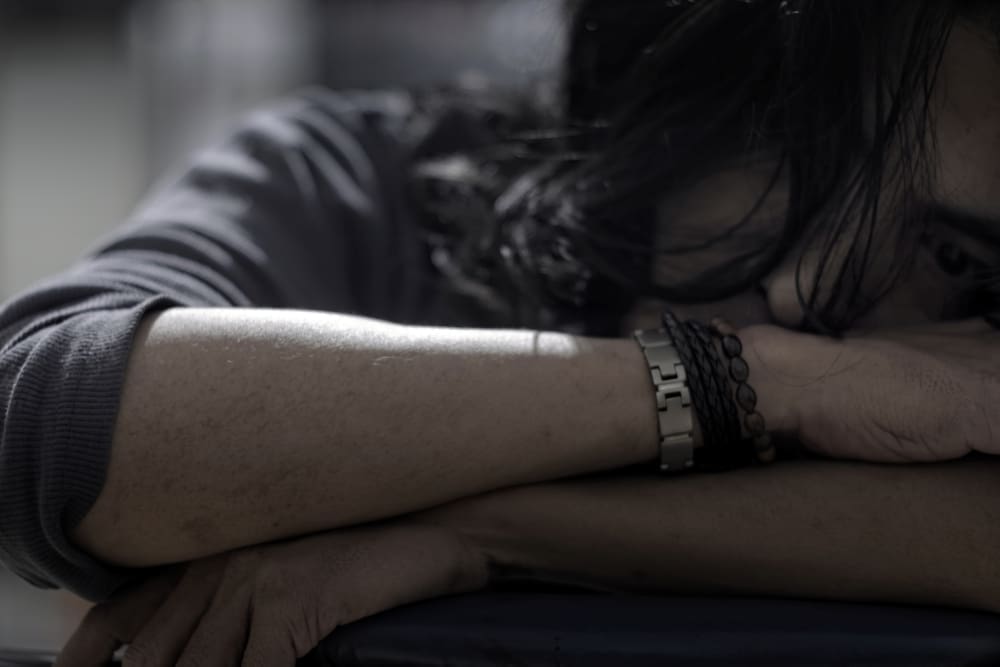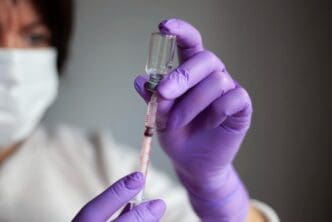Following a significant loss, the profound sadness and emotional pain of grief can feel indistinguishable from the clinical condition of depression. While both involve intense emotional distress, sleep disruption, and a loss of interest in daily activities, they are fundamentally different experiences requiring distinct approaches to support and treatment. Grief is a natural, albeit painful, response to loss that typically lessens in intensity over time, while Major Depressive Disorder (MDD) is a persistent mental health condition that pervades all aspects of life and often requires professional intervention. Understanding the crucial differences between these two states is vital for individuals, families, and clinicians to ensure that those suffering receive the appropriate care to navigate their pain and begin healing.
What is Grief? A Natural Response to Loss
Grief is the universal and multifaceted reaction to the loss of someone or something significant. While most commonly associated with the death of a loved one, grief can also arise from divorce, the loss of a job, a serious health diagnosis, or any major life change that alters one’s sense of self or future.
It is not a linear process with a clear beginning and end. The once-popular concept of the “five stages of grief”—denial, anger, bargaining, depression, and acceptance—is now understood by experts not as a rigid sequence but as a collection of common emotional states that people may experience in any order, and often revisit.
The experience of grief is intensely personal and unique to the individual and their relationship with what was lost. Its pain often comes in waves or pangs, triggered by memories, dates, or places. In between these waves, a grieving person can typically still experience moments of warmth, humor, and connection with others.
Understanding Major Depressive Disorder
Major Depressive Disorder (MDD), often simply called depression, is a mood disorder characterized by a persistent feeling of sadness or a loss of interest and pleasure in nearly all activities. Unlike the fluctuating nature of grief, the low mood in depression is pervasive, coloring a person’s entire experience of the world for weeks, months, or even longer.
According to the Diagnostic and Statistical Manual of Mental Disorders (DSM-5), the standard classification used by mental health professionals, a diagnosis of depression requires experiencing at least five core symptoms for a period of two weeks or more. These symptoms include a depressed mood, diminished interest or pleasure (anhedonia), significant weight loss or gain, insomnia or hypersomnia, and fatigue or loss of energy.
Other critical symptoms involve feelings of worthlessness or excessive guilt, a diminished ability to think or concentrate, and recurrent thoughts of death or suicide. These symptoms must cause clinically significant distress or impairment in social, occupational, or other important areas of functioning.
The Overlap: Where Grief and Depression Converge
The confusion between grief and depression is understandable because their symptoms can look remarkably similar on the surface. Both states can involve overwhelming sadness, frequent crying, difficulty sleeping, changes in appetite, and trouble concentrating on daily tasks.
A person who is grieving might withdraw from social activities, just as someone with depression would. Both may feel exhausted and emotionally numb, struggling to find the energy for work, hobbies, or even basic self-care. This significant overlap is why it can be difficult for individuals and their loved ones to determine if what they are experiencing is a natural part of the grieving process or a developing depressive episode.
Because loss can be a powerful trigger for a depressive episode, it’s possible for someone to experience both grief and depression simultaneously. A person with a history of depression may be more vulnerable to developing a new episode after a major loss. This co-occurrence makes a professional evaluation even more important.
Distinguishing Grief from Depression: The Key Differences
Despite the symptomatic overlap, mental health professionals look for key distinctions to differentiate between an uncomplicated grief reaction and a major depressive episode. These nuances are critical for determining the right path for support.
The Nature of Sadness
In grief, feelings of sadness and emptiness are directly tied to the loss. The pain is externally focused on the absence of the loved one. A grieving person might say, “I can’t believe they’re gone,” and the world feels empty without them. The pain often comes in intense waves, but there can be periods of respite in between.
In depression, the sadness is more internal, pervasive, and persistent. It is not necessarily tied to a specific thought or memory of loss. A person with depression might say, “I am empty,” feeling an internal void that is not directly attributable to an external event. This low mood is constant, rather than coming in waves.
Self-Esteem and Worthlessness
This is perhaps one of the most critical differentiators. While grief involves immense pain, it typically does not erode a person’s core sense of self-worth. A grieving person may feel regret or even guilt about things they did or didn’t do, but they do not usually feel that they are a worthless or bad person.
Depression, in contrast, is frequently characterized by intense feelings of worthlessness, self-loathing, and excessive or inappropriate guilt. A person with depression may ruminate on past failures and internalize a deep-seated belief that they are fundamentally flawed, a symptom that is not characteristic of normal grief.
The Capacity for Joy
A person moving through the grieving process can usually still experience moments of joy, humor, and pleasure, even if they are fleeting. They might laugh at a shared memory, enjoy a meal with friends, or find comfort in a hug. These moments do not negate their pain but exist alongside it.
For someone with depression, the ability to experience pleasure or joy (anhedonia) is severely diminished or absent entirely. Activities that were once enjoyable feel like chores, and positive events bring no emotional uplift. This inability to feel good is a hallmark of a depressive episode.
Thoughts of Death or Suicide
While both grief and depression can involve thoughts of death, their content and motivation differ. A grieving person might express a desire to “be with” the deceased or to join them. These thoughts are rooted in the pain of separation and a longing for reunion.
In depression, suicidal thoughts are more often driven by a desire to end the unbearable emotional pain of living and the feeling of being a burden to others. The focus is on escaping one’s own suffering and perceived worthlessness, rather than joining a lost loved one.
When Grief Lingers: Prolonged Grief Disorder
For most people, the acute intensity of grief softens over time. While the sense of loss remains, they are able to re-engage with life. However, for a small percentage of individuals, the grief remains debilitating and persistent, a condition now formally recognized as Prolonged Grief Disorder (PGD).
PGD is characterized by an intense and persistent yearning for the deceased that disrupts daily life for an extended period (at least 12 months for adults). Symptoms include identity disruption (e.g., feeling as though a part of oneself has died), a marked sense of disbelief about the death, intense emotional pain related to the death, and difficulty moving forward. It is distinct from both normal grief and depression, though it can co-occur with depression.
The Clinical View: A Shift in Diagnosis
Historically, the DSM included a “bereavement exclusion,” which advised clinicians against diagnosing major depression in the first two months following the death of a loved one. The rationale was to avoid pathologizing a natural grief response.
However, in 2013, the DSM-5 removed this exclusion. This change recognized that a major loss could indeed trigger a genuine depressive episode that warrants treatment, even within that initial two-month window. The decision emphasizes that while grief is normal, it does not grant immunity from depression, and withholding a necessary diagnosis could prevent someone from receiving timely and effective care.
Seeking Support: When and How to Get Help
If you or someone you know is struggling after a loss, it’s important to know that help is available. Seeking professional support is a sign of strength, not weakness. Consider reaching out to a mental health professional if symptoms are severe, persistent, and significantly impairing daily life.
Warning signs that indicate a need for professional evaluation include persistent feelings of worthlessness, suicidal thoughts, an inability to perform daily functions, or if the intense, acute phase of grief is not lessening after many months.
Therapeutic Approaches
Psychotherapy, or “talk therapy,” is a highly effective treatment for both complicated grief and depression. Therapies like Cognitive Behavioral Therapy (CBT) can help individuals challenge negative thought patterns, while grief counseling provides a safe space to process the loss and develop coping strategies.
For Prolonged Grief Disorder, a specific therapy has been developed that focuses on helping individuals come to terms with the reality of the loss while also finding ways to honor the deceased and reinvest in their own future.
Medication and Other Interventions
If a diagnosis of Major Depressive Disorder is made, antidepressant medications may be recommended, often in conjunction with therapy. These medications can help correct neurochemical imbalances that contribute to the persistent low mood and lack of energy, providing the stability needed for a person to fully engage in therapy and daily life. Medication is generally not the first-line treatment for an uncomplicated grief response.
Navigating Your Path Forward
Grief is a testament to the love and connection we have lost; it is a painful but necessary journey. Depression is a treatable medical condition that robs a person of their vitality and hope. While they can feel the same from the inside, understanding the fundamental differences between them is the first and most critical step toward healing. By recognizing the signs and knowing when to seek help, we can ensure that we, and those we care about, navigate the difficult terrain of loss with the right support, compassion, and care.








